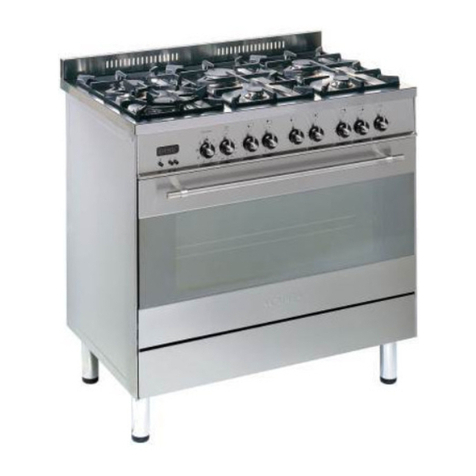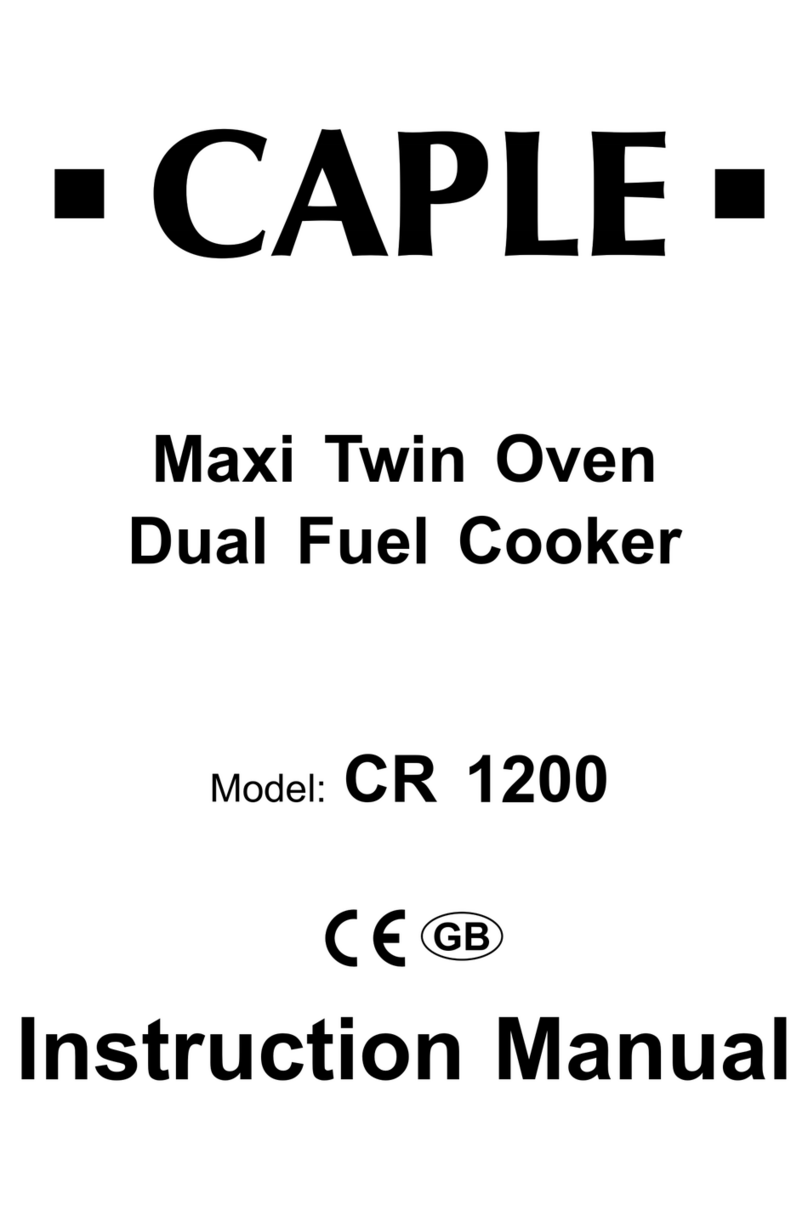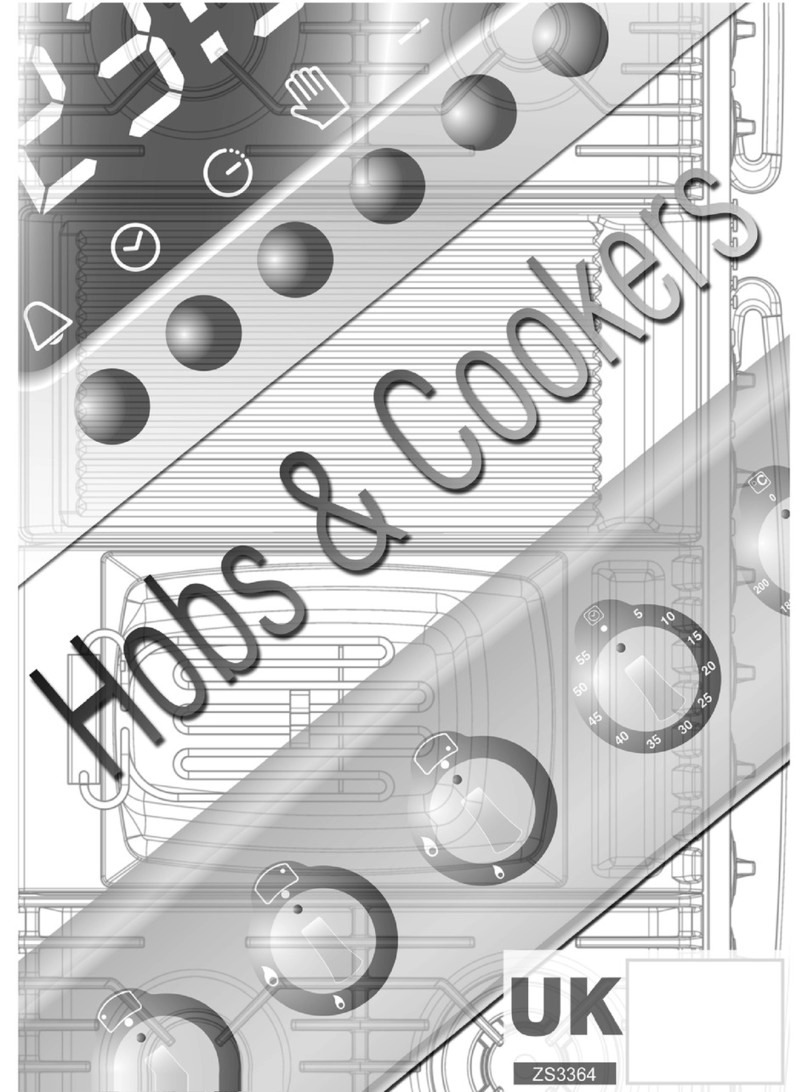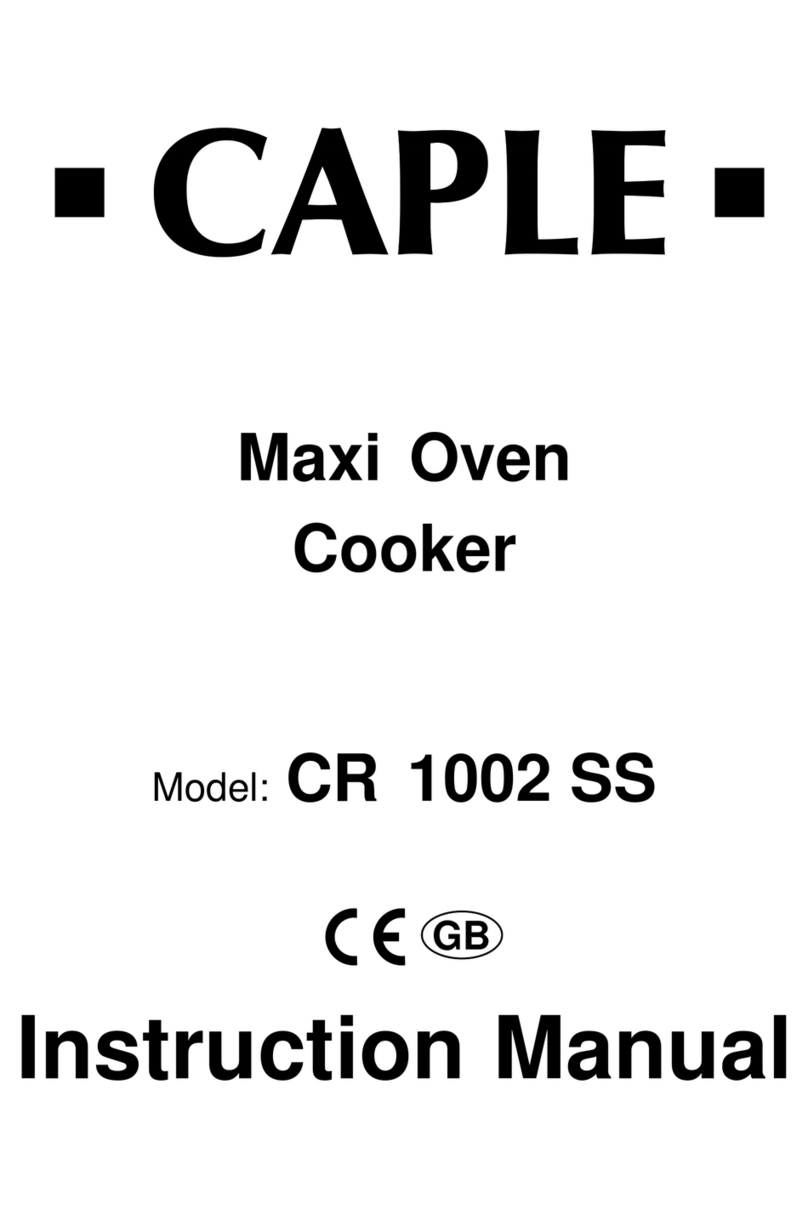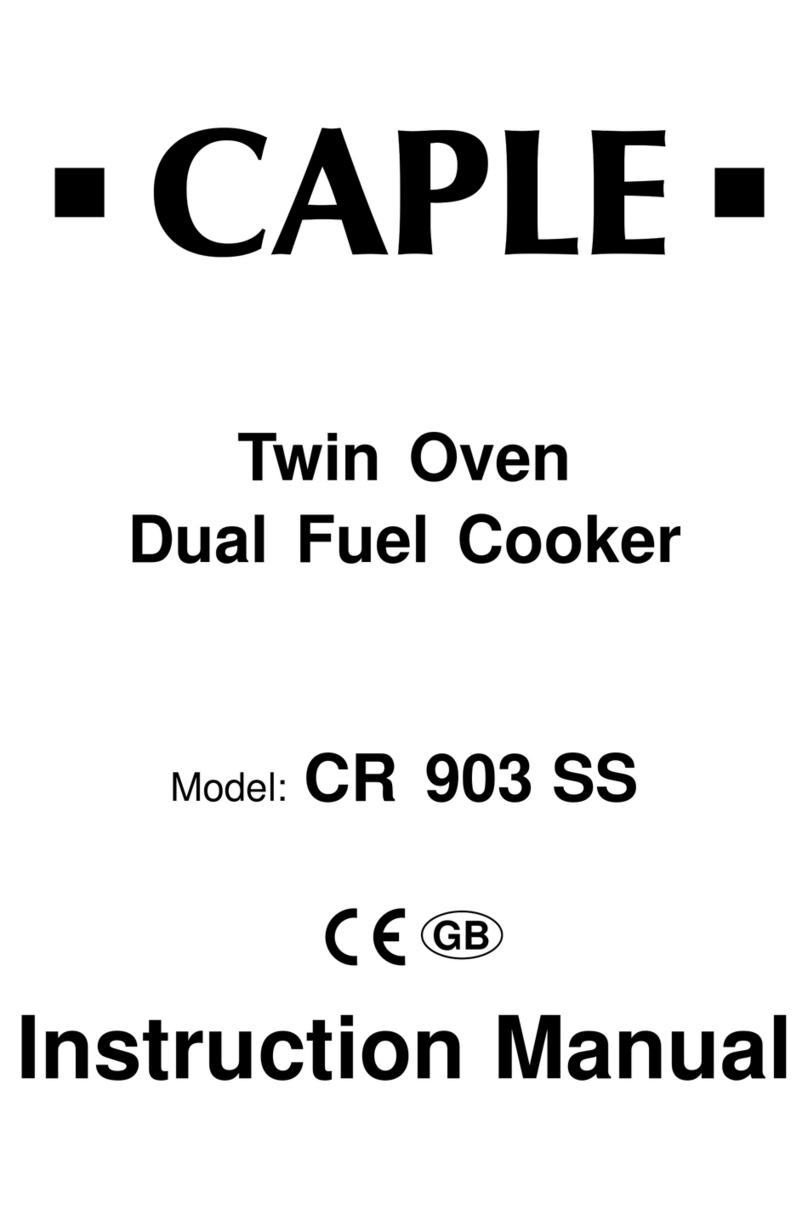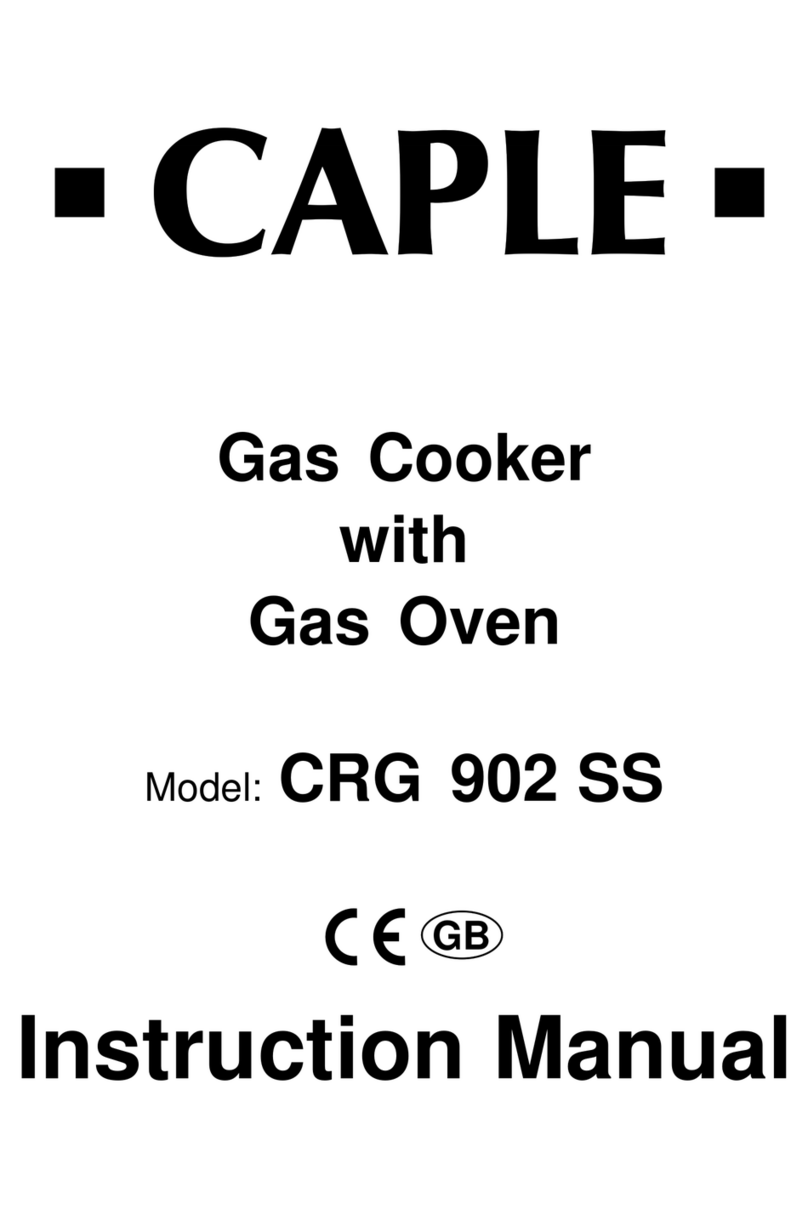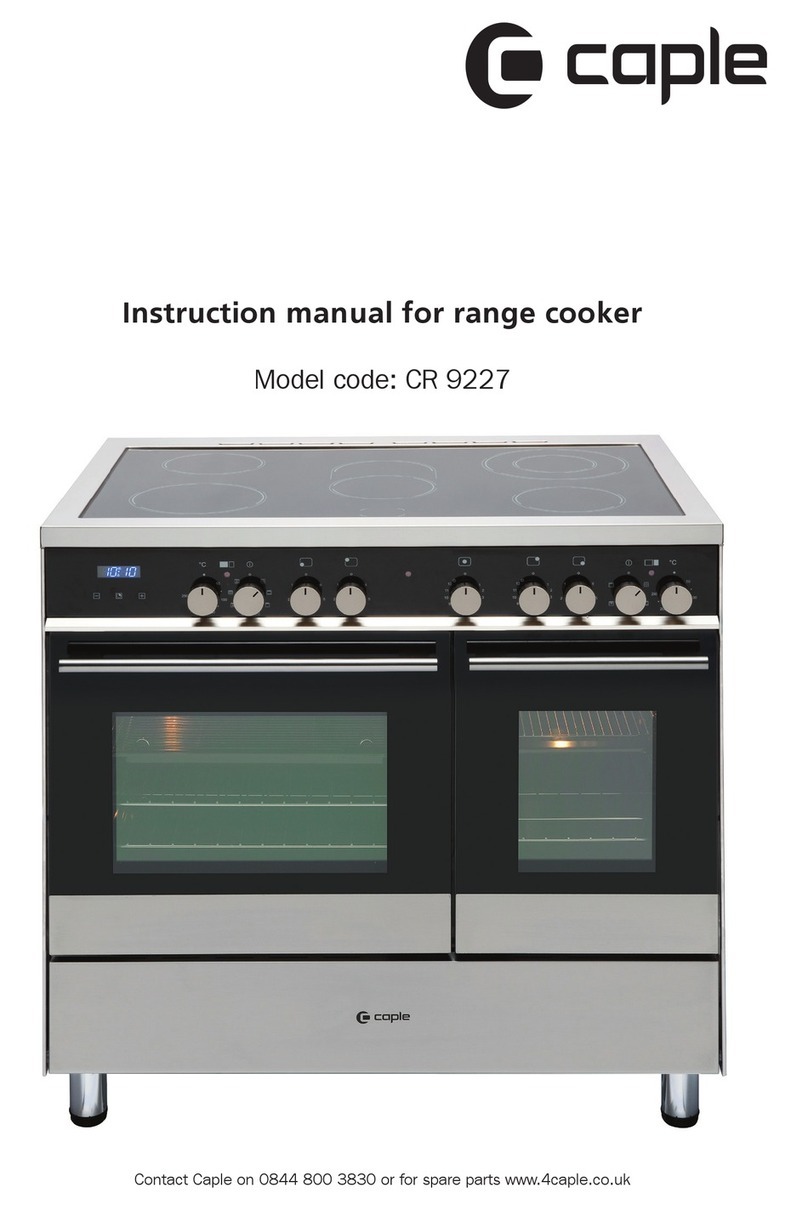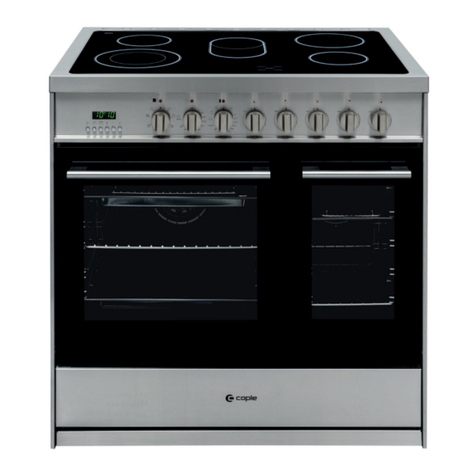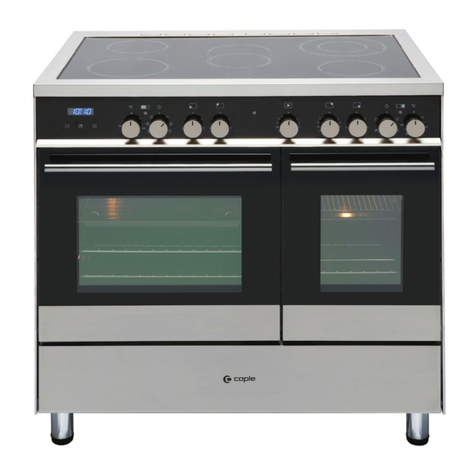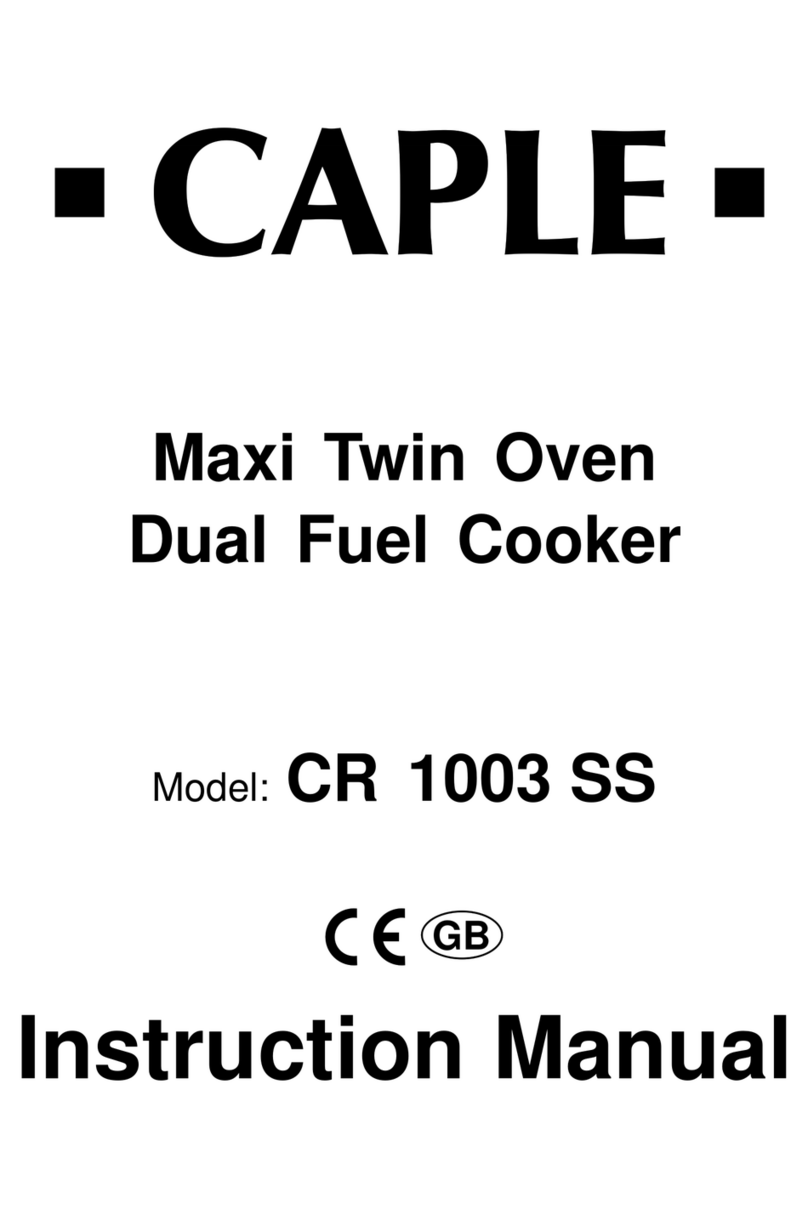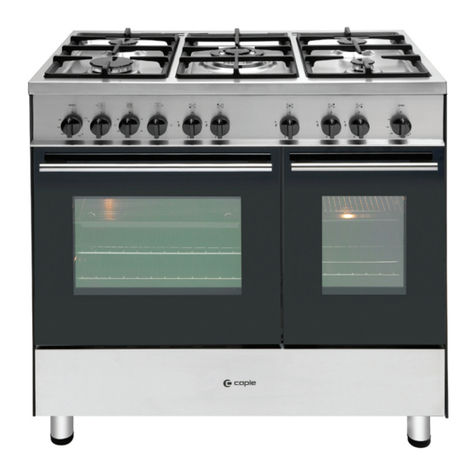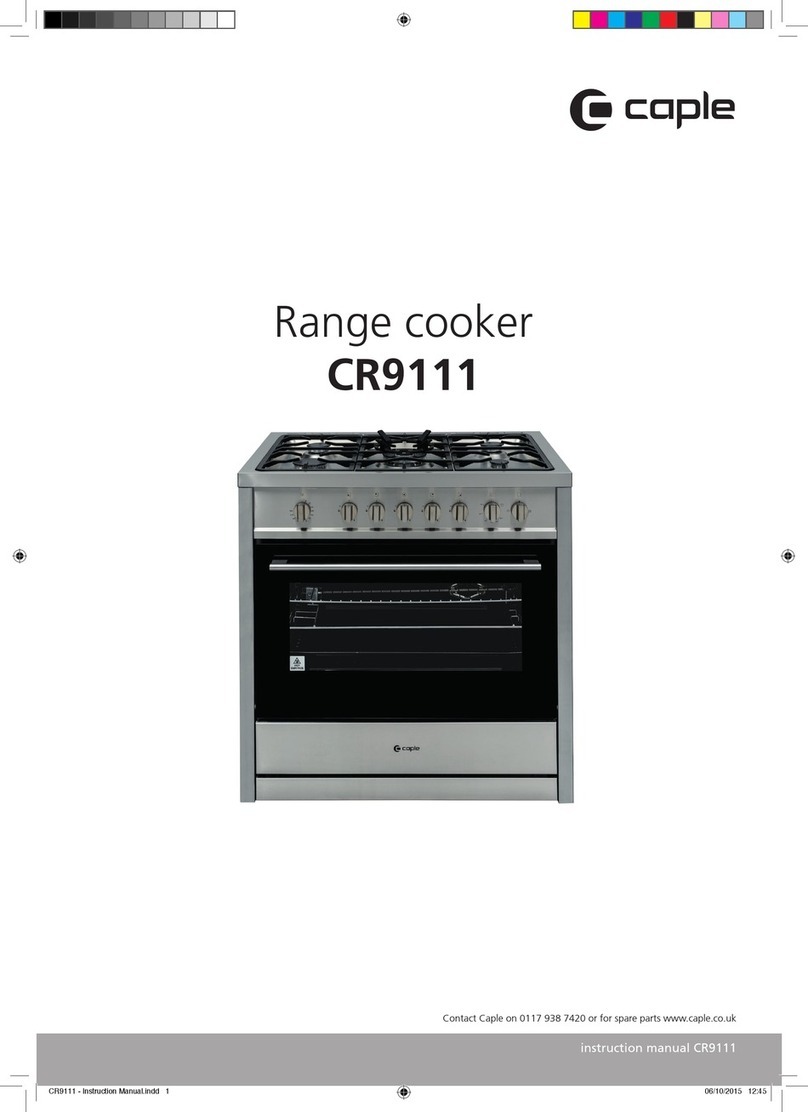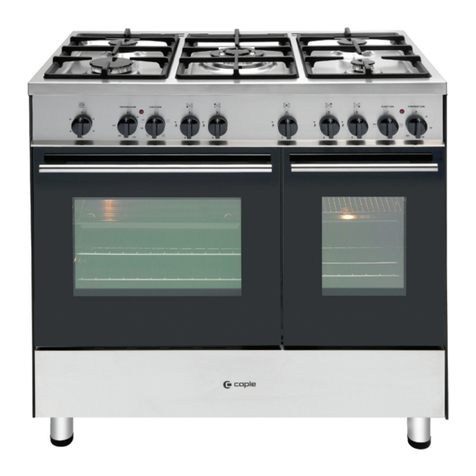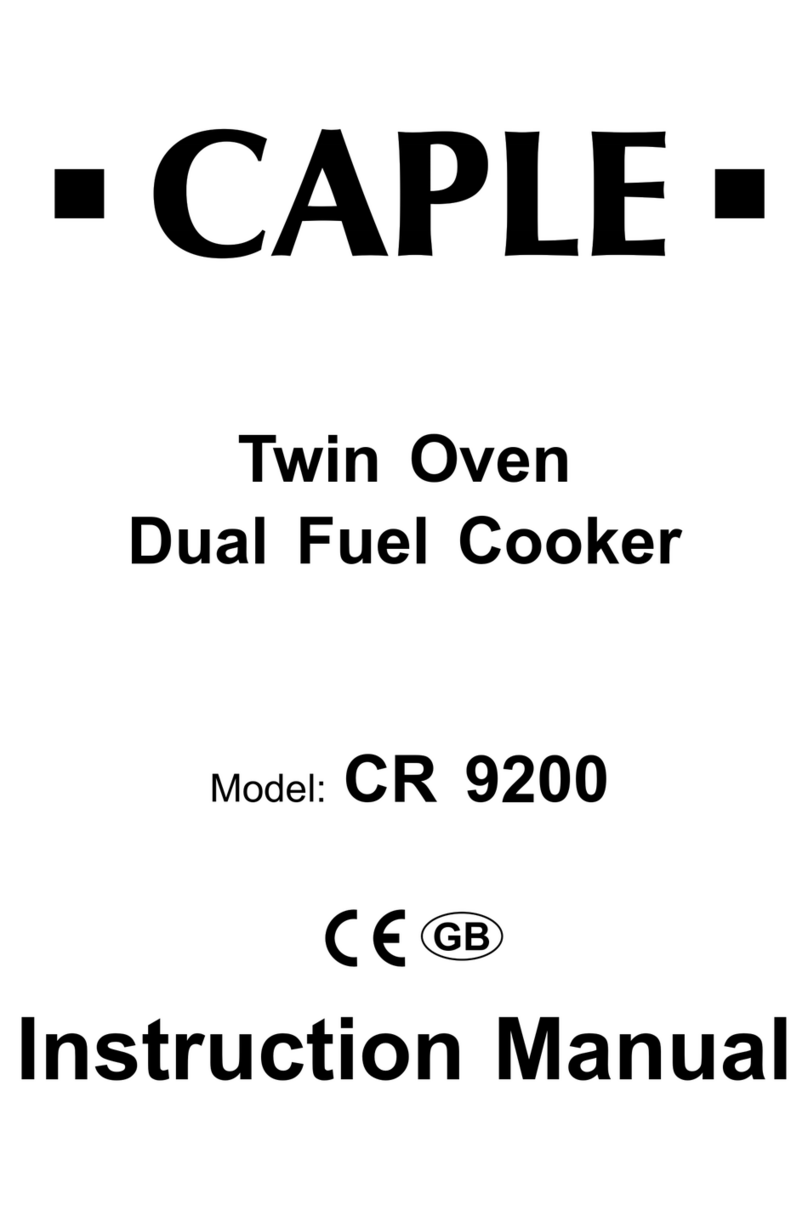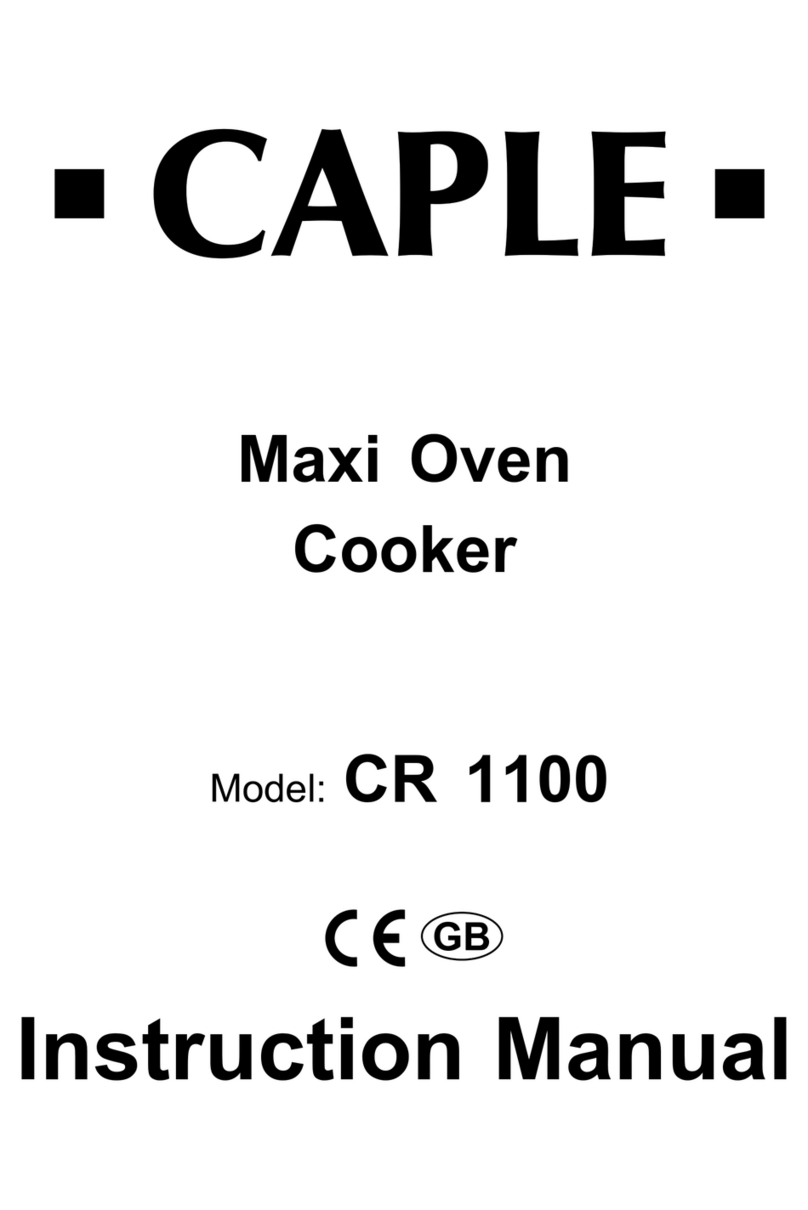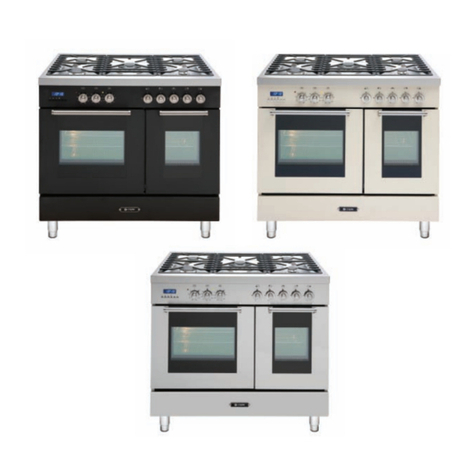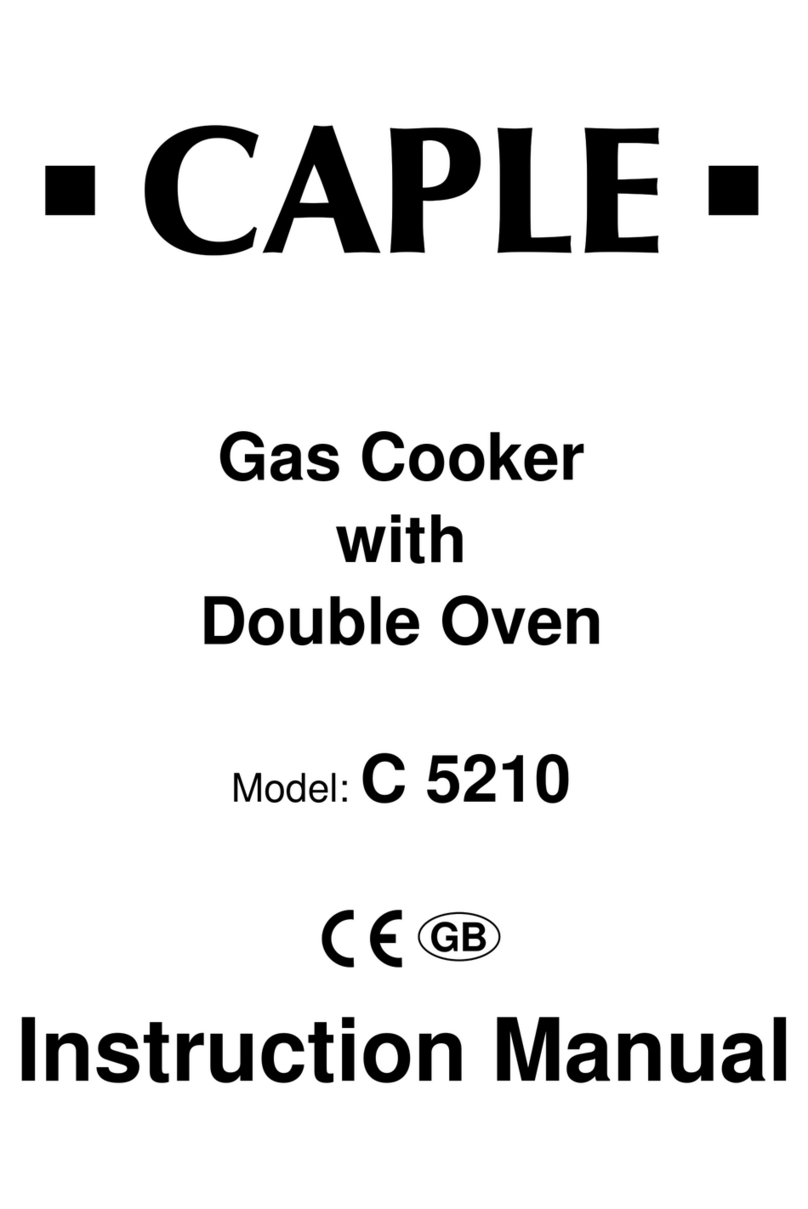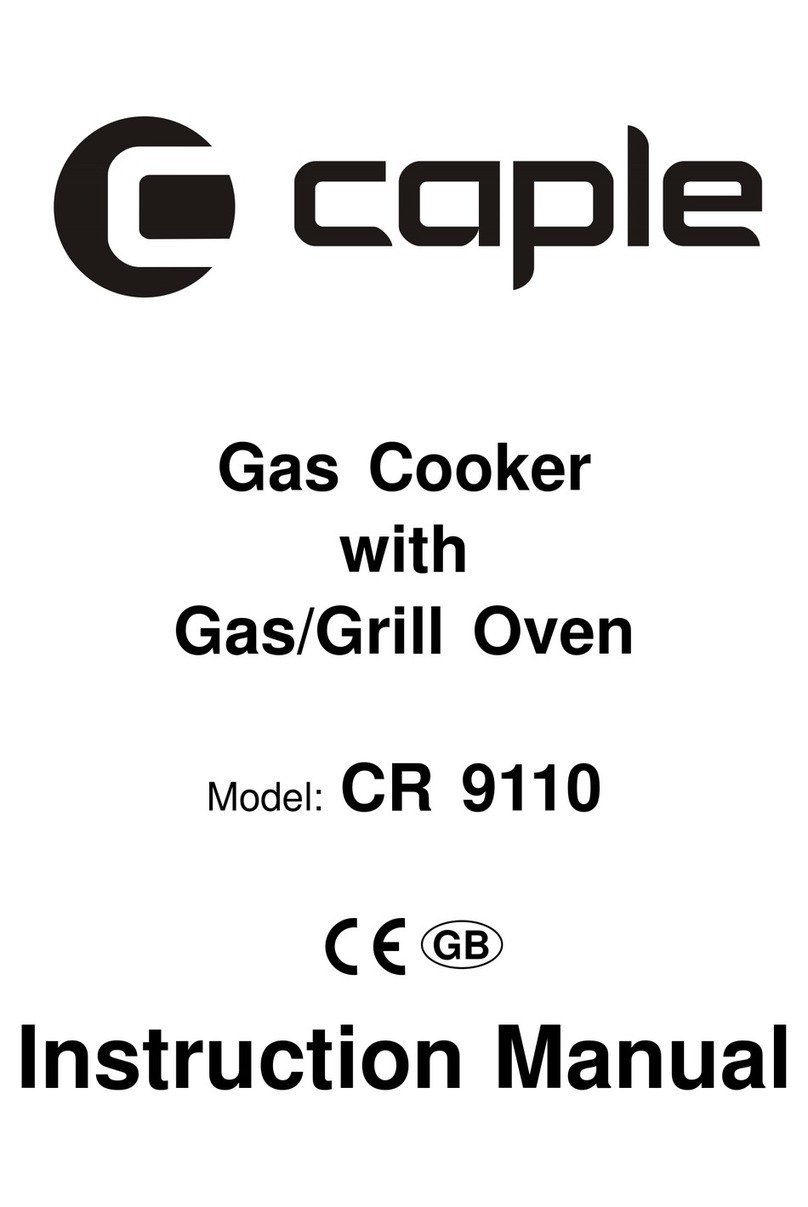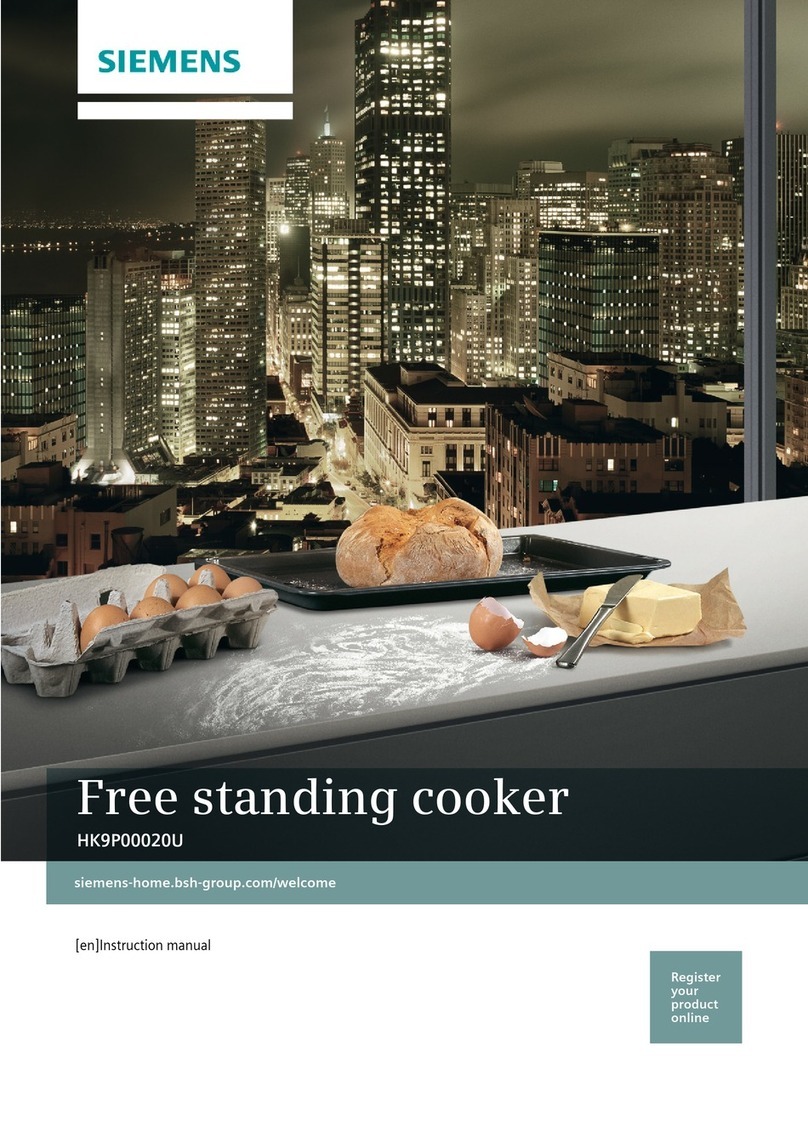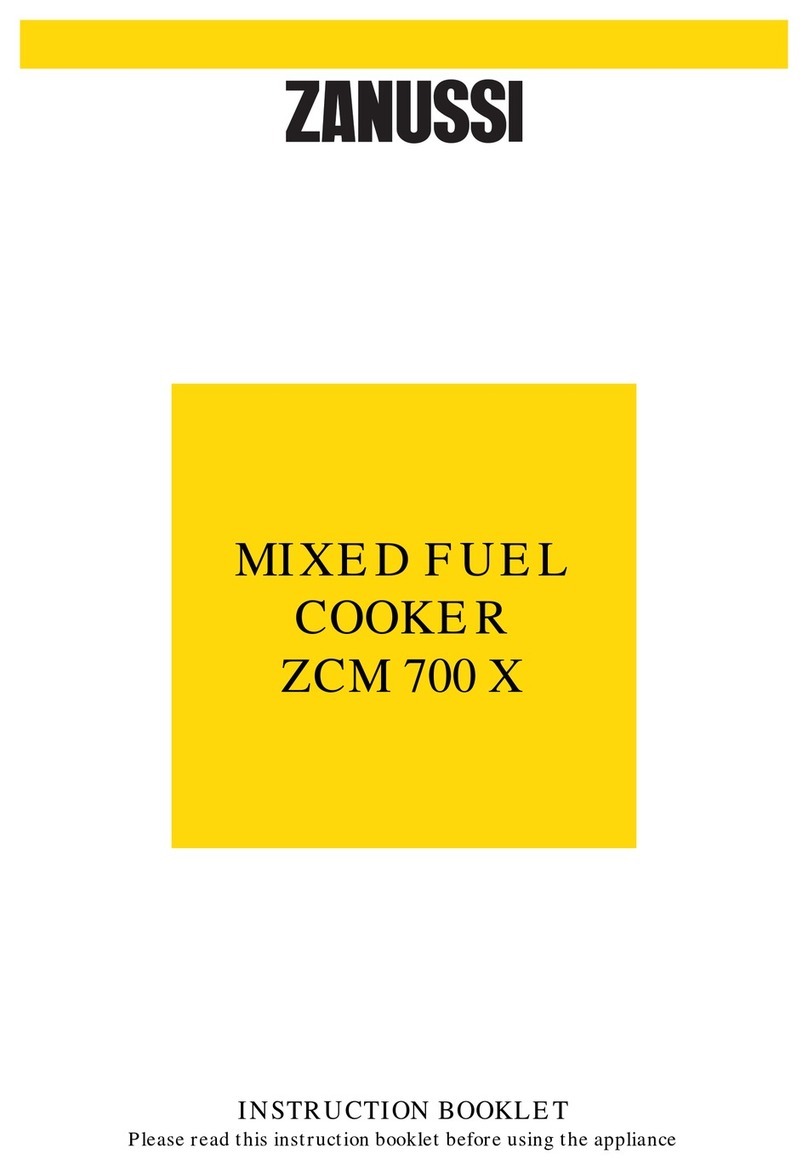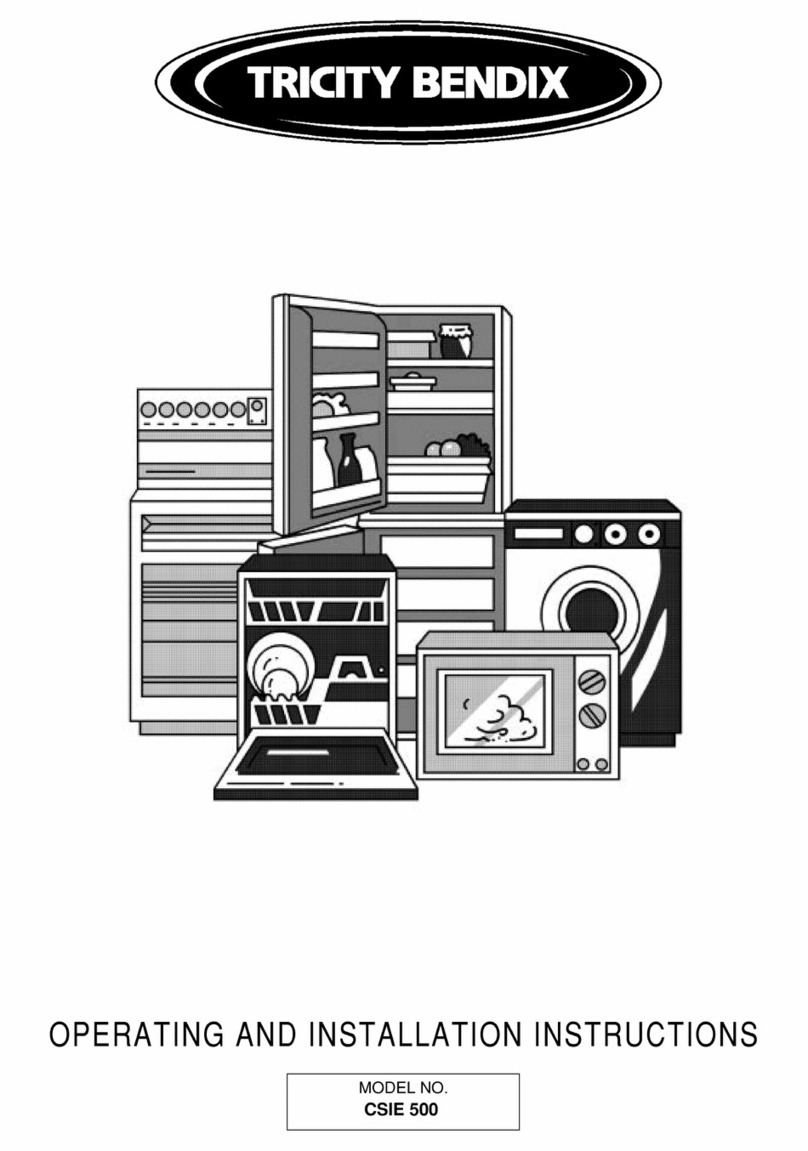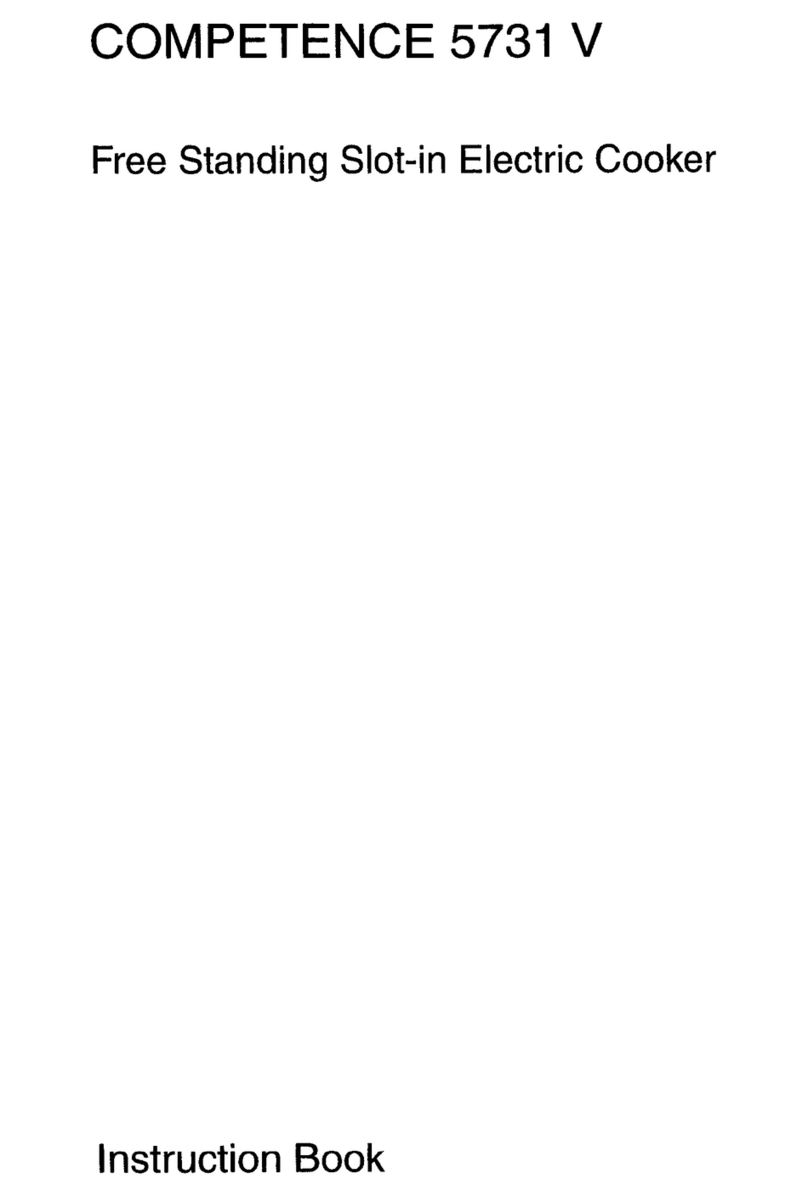3
Appliance conformity
– The appliance complies with European Directives EEC 89/336,
92/31 and 93/68 relative to electromagnetic compatibility.
– All our appliances are designed and constructed in compliance
with European standards EN 60 335-1 and EN 60 335-2-6
and their subsequent amendments, in conformance with the
requirements of the European Low Voltage Directive EEC
73/23 and 93/68.
– The oven accessories that can come into contact with food are
constructed using materials that conform to European
directive EEC 89/109 of 21/12/88.
– The appliances are constructed in compliance with European
gas directives EEC 90/396, EEC 93/68 and European
standards EN 30-1/EN 30-2.
– The conformity to the standards is proved by symbol CE
applied.
This booklet is valid only for the country of installation
indicated on the back cover and on the appliance itself.
Carefully keep this booklet for future reference.
TO THE OWNER OF THE COOKER
Retain this owner’s manual for future reference.
TO THE INSTALLER:
Leave this owner’s manual with the cooker.
The cooker model and its technical data (power, supply voltage,
etc.) appear on the data plate affixed to the inner side of the
Plate Warming Door. The factory settings are indicated on the
label affixed beside the data plate.
“THIS COOKER GUARANTEE IS FOR DOMESTIC
USE ONLY”
This booklet gives valuable instructions covering the installation,
servicing and use of your cooker.
Important
After using the cooker, it is advisable to:
– Always check that the control knobs are in the “ ” position.
– Also close the gas cylinder valve (if LPG is used) or the supply
cock (if natural gas is used).
– Periodically inspect the rubber hose. If it shows any signs of
wear it must be replaced: never repair the gas hose.
Contact your qualified installer.
FOR YOUR SAFETY
The installation must be performed by a competent installer,
properly qualified as required by local regulations. Any rewiring
required of the household electrics in order to install the
cooker should only be carried out by a Qualified Electrician. The
manufacturer declines all responsibility for any type of
damage resulting from failure to observe the regulations, or
from negligent installation of the cooker.
For repairs, always call in an authorised Technical Service Centre
and insist on the use of original spare parts.
Caution: When in use parts of the cooker become very hot (e.g.
the burners) and remain hot for a long period of time. Use of
oven gloves is recommended whilst using your cooker. Children
should be kept away from the appliance.
– Make sure there is adequate air circulation around the cooker.
Poor ventilation reduces the amount of oxygen in the room. If in
doubt, consult the installer. In the interest of hygiene and
safety, the cooker should always be kept clean.
– Deposits of grease or other foods can catch fire. Carefully
supervise the cooking of oils or fat.
– When you first use your cooker it may give off a slight odour
but this will stop after a little use.
– This product has been designed for domestic cooking only and
should not be used for other purposes (such as heating a
room).
– Avoid installing the cooker close to flammable materials (e.g.
curtains, drapes, etc...)
– Operate the cooker with the type of gas specified on the
adhesive label placed in the inner side of the Plate Warming
Door.
– Before cleaning or servicing the appliance, disconnect it from
the electricity supply by unplugging it or by using the main
circuit breaker.
Please note: The connection hose and the chain are part of the
installation not part of the cooker. They should be provided by
your installer and are available at most builders merchants.
THIS MANUAL CONTAINS:
• User’s instructions
• Cooking guide
• Installation instructions
• Servicing instructions
